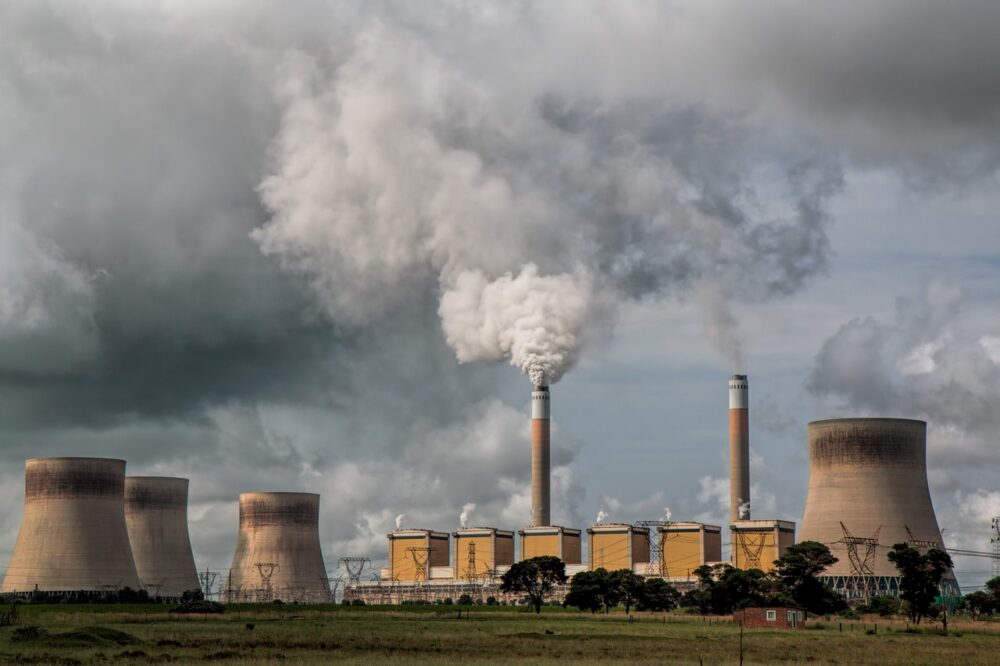
China and India are two of the five highest-emitting countries as the world continues its fight to try and prevent the possibility of runaway climate change.
In 2018, global CO2 emissions reached a historical high of 33.5 gigatonnes of carbon dioxide (GtCO2), which was driven by a robust growth in population and economic activity, according to the International Energy Agency.
But there was a slight drop – less than 1% – in 2019, mainly due to a decline in power sector emissions in advanced economies and milder weather conditions across continents.
Here, NS Energy notes the five highest CO2 emitting countries, according to the Global Carbon Project’s latest figures from 2018.
Five highest-emitting countries in the world
1. China – 10.1 billion metric tonnes
China is the world’s highest-emitting country due to its 10.1 billion metric tonnes share in 2018.
That same year, it accounted for 24% of global energy consumption and 34% of global energy consumption growth, to which it has been the largest contributor for the past 18 years.
China is the biggest burner of coal – which held a 58% share in the country’s energy mix in 2018 – and it is also the largest market for fossil fuels.
But, in September 2020, it joined a growing number of nations to announce its ambition to become carbon neutral before 2060.
President Xi Jinping said his country will seek to peak its emissions “before 2030”, and introduce “more vigorous policies” to advance its nationally determined contributions (NDCs) set out under the Paris Agreement – an international climate pact that aims to cap the rise in global temperatures at “well below” 2C by 2100.
According to analysis by UK think tank Carbon Brief, the release of about 215 billion tonnes of CO2 could be avoided over the next four decades if China’s ambition is implemented effectively.
2. US – 5.4 billion metric tonnes
The US is the second-highest emitting nation, with 5.4 billion metric tonnes of CO2 in 2018.
Carbon dioxide emissions from fossil fuel combustion for energy were equal to about 75% of the country’s total greenhouse gas (GHG) emissions and about 93% of its total CO2 emissions in 2018, according to the US Energy Information Administration.

While its coal generation has rapidly decreased over the past few years, the rise in natural gas and US shale across the past decade has ensured that fossil fuels still account for the majority of the nation’s energy mix.
The US government’s decision to remove the country from the Paris Agreement dealt a significant blow to global climate efforts and displayed a clear lack of support for cooperation in limiting the effects of climate change.
3. India – 2.7 billion metric tonnes
As the world’s third-largest emitting nation, India recorded a 2.7 billion metric tonnes share of global CO2 in 2018.
While the nation has one of the lowest emissions levels per capita in the G20, it still contributed to 7% of global emissions in 2019.
Coal, which is responsible for about 40% of India’s CO2 emissions from fossil fuels, currently generates 72% of its electricity.
The mineral’s share in the country’s primary energy consumption is expected to decline from 56% in 2017 to 48% in 2040, according to oil major BP’s Energy Outlook 2019.
But India has now also emerged as one of the leading countries for clean technologies and looks set to cross the 100 gigawatts (GW) renewable energy capacity mark by the end of 2020 – with plans to hit 275 GW by 2027 and 400 GW by 2030.
4. Russia – 1.7 billion metric tonnes
Russia is ranked fourth in the list of the highest-emitting nations, with 1.7 billion metric tonnes of CO2 in 2018.
It is the world’s largest producer of crude oil and has the highest proven natural gas reserves in the world ahead of Iran and Qatar.
It had 38 trillion cubic meters worth of the fossil fuel in 2019, which is four trillion cubic meters more than it held 10 years previously.
In 2016, fossil fuels made up 87% of Russia’s energy mix, with nuclear and renewables making up the remaining share.
5. Japan – 1.2 billion metric tonnes
Japan is the fifth-largest emitting country, with 1.2 billion metric tonnes of CO2 emissions in 2018.
The nation’s energy mix relies heavily on fossil fuels, as coal, gas and oil are currently the dominant sources of electricity.
In October 2020, Japan committed to achieving net-zero emissions by 2050, which will require a big strategic shift away from coal in its domestic energy production.
Its pre-existing “Basic Energy Plan” – set in 2018 and due for revision in 2021 – targets 22% to 24% of its energy to come from renewables by 2030, along with 20% to 22% from nuclear power and 56% from fossil fuels.


